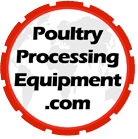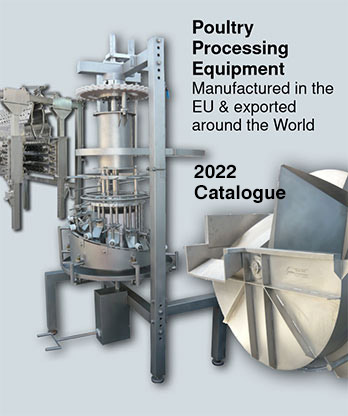Water and Effluent Treatment

Essential components of any wastewater treatment plant:
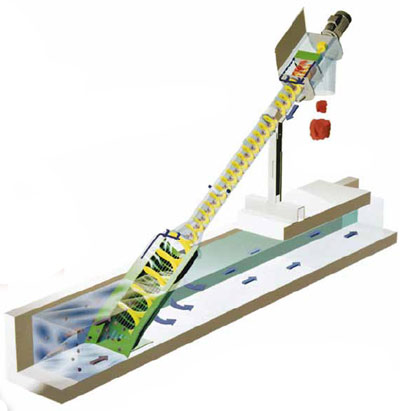
- Screw screen system and rake screens
- Flotation unit
- Flocculation system / wastewater treatment without biological clarification
- Biological systems for activated sludge
- Sequencing Batch Reactor system (SBR)
SBR plants are not part of our standard scope of supply - we include them only in very special cases.
Rake and Drum Screens

We supply complete solutions for the treatment of industrial wastewater with a focus on the food industry. Based on many years of experience gained in design and construction of slaughterhouses and the respective production plants for various sectors of the food industry, we develop the optimal design of the whole process of wastewater treatment in compliance with all legal regulations.
indicators for the determination of the quality of the wastewater are the BSB5 value (biological oxygen demand) and the CSB value (chemical oxygen demand). They provide information about the quality of the respective wastewater and have become the international standard score. Wastewater in the meat industry is mainly composed of the following substances:
- Fat
- Suspended particles
- Protein
- Blood
- excrement and urine*
* excrement and urine from the animals have high CSB values. it is therefore necessary to collect them in separate pits in the stable.
Both the BSB5 value and the CSB value depend highly on the conduct of the staff and on the optimal management of the plant. For instance, it is possible to plan a wastewater treatment plant much smaller and to cut costs accordingly if the wastewater contaminated by excrement, urine, and blood are strictly separated.
The planning of our plants is based on the “german Wastewater Ordinance, Section meat industry, annex 10” specifying the following values as acceptable for inlet in public water:
- BSB5 - 25 mg/l
- CSB - 110 mg/l
- Ammoniac Nitrogen - 10 mg/l
- Nitrogen - 18 mg/l
- Phosphor - 2 mg/l
Exemplary CSB inlet values of different wastewater obtained in production before treatment:
| Cattle with abomasum and intestines | up to 10,000 mg/l | |
| Pigs | up to 4,500 mg/l | |
| Poultry | up to 4,000 mg/l | |
| Processing | up to 2,500 mg/l | |
| Truck washing | up to 1,500 mg/l |
In fact it is possible to design all plants in accordance with the various regional and national requirements, i. e. the wastewater quality required by you is achieved in any case.
We will be glad to give you any advice you may need regarding planning and implementation of your plant.
Floatation and Flocculation
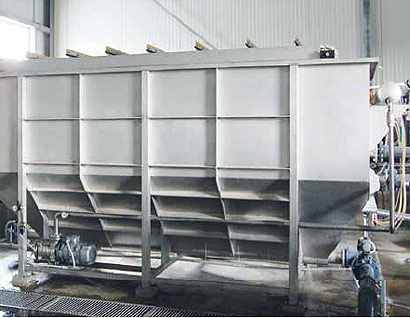 Wastewater from various production areas
is collected separately and conveyed to the
wastewater treatment plant via appropriate
collecting ducts.
Wastewater from various production areas
is collected separately and conveyed to the
wastewater treatment plant via appropriate
collecting ducts.
inside the plant, the water first flows through the pre-separation area, where coarse solid matter is separated by screw screen or drum screen systems. Separated from the wastewater, they are dumped into containers.
The treated wastewater is conveyed to a pump sump and from there into the flotation or flocculation system by means of an immersion pump.
This is the place where emulsified fat, blood, and small solids are separated. in the flocculation area a polymer “inoculation” of the wastewater is done inside a pipe system to enhance agglomeration of the suspended particles.
The treated wastewater is transferred to the flotation system, where the components of the wastewater, as described above, are moved up to the surface by means of dissolved compressed air flotation (flotation by micro bubbles), skimmed by a sludge rake as so-called flotation sludge and collected in a sludge collecting tank.
 Deposits at the bottom of the flotation tank
are returned to the inlet channel by automatically
controlled discharge valves.
Deposits at the bottom of the flotation tank
are returned to the inlet channel by automatically
controlled discharge valves.
Achievable reduction after flocculation:
- BSB5: 40% - 60%
- CSB: 40% - 60%
- Fat: 80% - 90%
The biological clarification is done in a sequencing batch reactor (SBR). The SBR process is subdivided in five stages:
- Filling of the pit
- Decomposition of BSB5 and oxidation of ammonium
- Sedimentation of the activated sludge
- Separation of the clear wastewater by means of a decanter
- Pumping out of the excess sludge (the pit is ready for refilling)
The pumped-out excess sludge is collected
as digested sludge and can be used
as fertilizer for agriculture or purified in a
municipal sewage treatment plant by means
of sludge treatment.
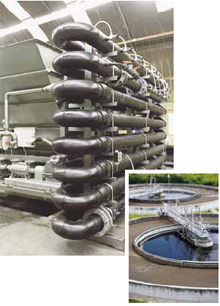
Advantages of SBR:
- All treatment processes take place inside one single pit - accordingly little floor space and low investment is required
- Easy process monitoring and maintenance
- Big buffer capacities - therefore unsusceptible to fluctuations of the quantity of wastewater and of the degree of pollution
- Easy adaptation of the nitrification and denitrification process to the load of nitrogen
- No separate final clarification required
